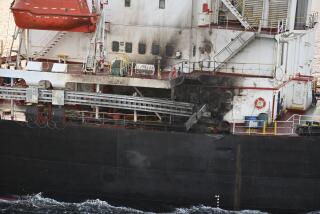NATO Planning ‘Rapid-Reaction Force’ : Military: Strategy shifts with a diminished Soviet threat. Britain is expected to take a key role in forming the new contingent.
- Share via
LONDON — The defense ministers of the North Atlantic Treaty Organization are expected to create a new “rapid-reaction force” as they continue to adapt NATO to the post-Cold War world at a meeting scheduled in Brussels on Tuesday and Wednesday.
Defense sources here said that the new blueprint would call for British forces to play a key role in the new force, to be made up of 70,000 to 100,000 troops.
Thus, NATO officials will be tacitly acknowledging the important role that the British played in sending a heavy armored division to support American and other coalition forces in the Persian Gulf War.
The rapid-reaction force would be a major component in the reshaped strategy for the 16-nation alliance, officials said.
In Brussels, NATO Secretary General Manfred Woerner declared of the coming meeting: “There are still some minor differences, but I hope and think we’ll get a decision (this) week.”
NATO is undergoing its most serious strategy shift since the alliance was created at the end of World War II to deal with the threat from the Soviet Union.
In explaining the new force, Woerner declared: “We are changing from deterrence against a major offensive action by the Soviet Union to deterring and managing crises coming from different directions that we cannot yet define.
“The rapid-reaction force will be deployed in a crisis when you need to give a political signal, as we did in Turkey during the Gulf War, or to send combat forces to reinforce local defenses.”
Under the new plan, the British would provide an armored division based in Germany and a two-brigade division stationed in southeast England for the rapid-reaction force, sources here said.
The force would also have an air-mobile division of Dutch, Belgian, British and German troops and a division from NATO’s southern region, with forces from Italy, Greece and Turkey.
Two other major elements of a revised NATO structure would be: the main defense forces based in Central Europe--German and American armor with a multinational corps--and “augmentation forces,” or reinforcements and reserves on call outside Germany.
The rapid-reaction force will have air support, heavy armor and naval forces, sources said, and NATO will remain under a U.S. supreme commander. Army Gen. John Galvin at present holds that post.
Galvin will continue to have under his control a smaller “immediate-reaction force,” the existing mobile force, which can be deployed to a trouble spot within a week.
As for the main forces deployed in Germany, Secretary General Woerner said:
“We do not see a major threat of an all-out attack on Europe. But what remains is still powerful military might.
“A combination of an unstable political situation and a still-powerful military apparatus creates a risk.”
More to Read
Sign up for Essential California
The most important California stories and recommendations in your inbox every morning.
You may occasionally receive promotional content from the Los Angeles Times.













